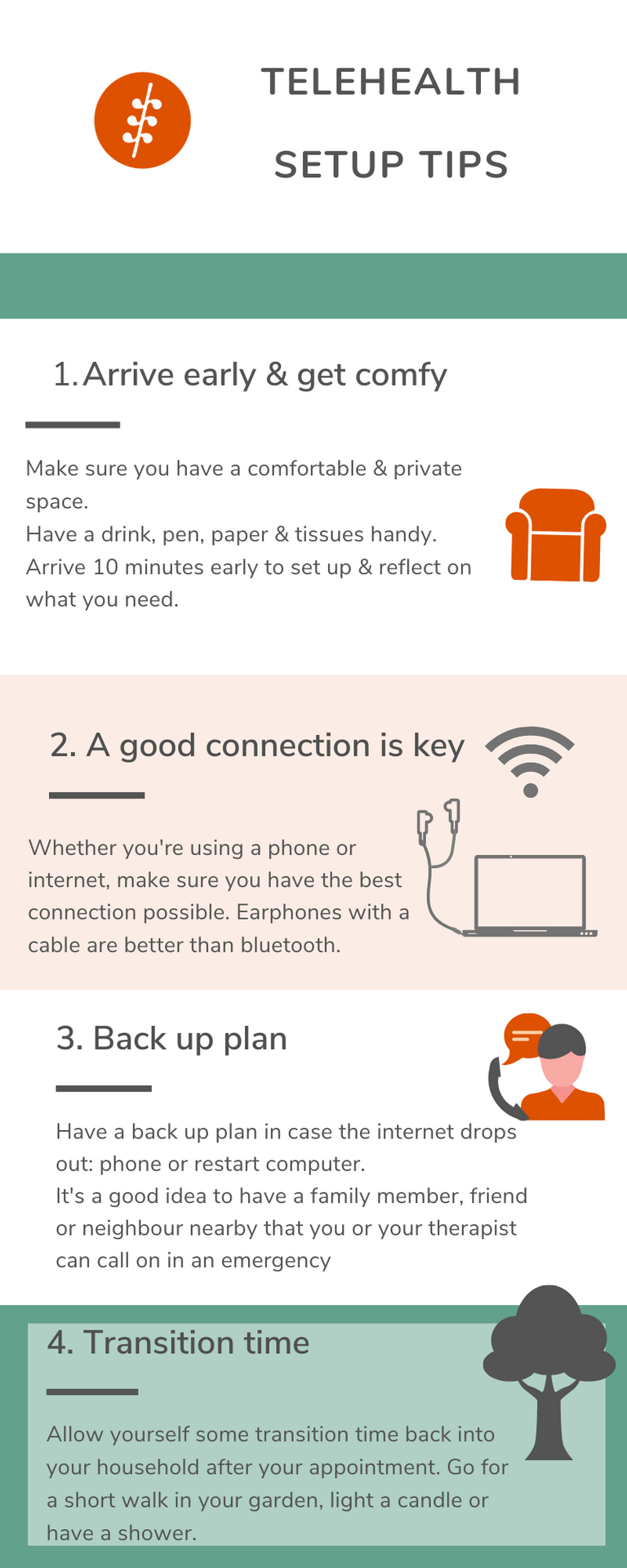
Tailored support to meet your needs and build inner resources for positive change.

Telehealth or online therapy sessions are held in the comfort of your own home, where you connect via your computer, iPad or phone. It is a great way to receive support when you’re in isolation or if you live remotely. However, many people are finding online therapy is just as effective and way more convenient than face to face sessions. Indeed, a growing pool of research agrees (source).
By its very nature, attending therapy is a personal and at times, sensitive experience. It is important to ensure you have a comfortable and private space where you feel at ease. Take the time to set up a space in whatever way works for you ... I like to have a comfortable chair, a rug and a hot drink. It’s also a good idea to have a pen and paper and some tissues handy.

Appointments are available on the phone or through video platforms on computers or tablets. If using video, a good internet connection is important. Taking the time to test your setup, and to ensure that your device has the latest updates will also help to avoid any last minute hiccups.
Here are some other pointers:
Nobody wants their internet connection to drop out, especially in the middle of a therapy session. Whilst these incidents are rare, it is better to be safe than sorry.
The best way to deal with this is to have a back up plan. Perhaps discuss with your therapist what both of you will do if the connection drops out (for example, reconnect through the phone, try another platform or restart the computer and try again).
It is a good idea to discuss with your therapist if there is someone who lives with you, or nearby, who might be a source of support if you need someone to be physically present for any reason - again this is rare but it is good to be prepared.
When attending face to face sessions, there is a process of travelling that gives you valuable (and rare) contemplative time. This space for reflection is often missing if you rush from cooking dinner into your appointment at the dining table. Some thoughts to help you create space:
Allow yourself transition time of around 10 - 15 mins before and after your session. Prior to the session, this will allow you to make sure you have everything in place, as well as time to consider what you need from the session.
Small rituals such as having a cup of tea, drawing, lighting a candle, taking a short walk in the garden or having a shower can help you to transition back to your household and daily life that is just on the other side of the door.
Telehealth is not necessarily for everyone. For example, technology may be a barrier if you don’t have access or you don’t know how to use it. And even with the best set up, there are situations where it may be best to access face to face support.
If you’d like to give it a try you can book a free 20 minute consultation with me. You canget a feel for the experience and figure out if it's something you'd like to engage with long term.
This infographic provides a summary of the best set up.


Tailored support to meet your needs and build inner resources for positive change.

Find relief, understanding and support in a small and confidential group of peers.

Workshops & Professional Learning
Connection, nourishment and practical learning for teams, workplaces and community groups.
Header image: Chris Montgomery